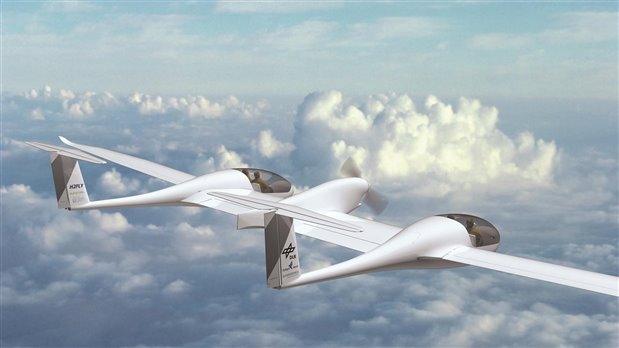By announcing its HY4 four-seater aircraft, the German Aerospace Center (Deutsches Zentrum für Luft- und Raumfahrt; DLR) is taking a big step towards making zero-emission commercial flying a reality. Powered solely by a hydrogen fuel cell battery system the HY4 is aimed at demonstrating the feasibility of this technology for passenger aircraft. First fight is expected in the summer of 2016.
Researchers at the Stuttgart-based DLR Institute of Engineering Thermodynamics have developed a special hybrid system: the main power source is a low-temperature Proton Exchange Membrane (PEM) fuel cell. This converts the hydrogen and oxygen in the tank into water and electrical energy. During cruise flight, the fuel cell continuously supplies the electric motor with usable power. A high-performance lithium battery covers peak power loads during take-off and when climbing to a higher altitude.
The HY4's electric motor has an output of 80 kW and allows for a maximum speed of approximately 200 kilometers per hour and a cruising speed of 145 kilometers per hour. Depending on velocity, altitude and load, a range of between 750 and 1500 kilometers is possible. The most striking feature of the HY4 is its two fuselages, which are firmly connected to each other by the wing. This twin fuselage design allows an optimal distribution of the drive components and a higher total loading capacity. Each one can seat two occupants. The maximum weight of the HY4 is 1500 kilograms.
In particular, the goal of the DLR researchers is to use aircraft such as the HY4 as an Electric Air Taxi to connect destinations more flexibly and offer faster alternatives to existing routes and means of transport. Electric drives are well suited for shorter distances due to their low noise and emission levels, as well as their capability to take off and land on short runways thanks to their high torque. With more than 60 regional and international airports, Germany has a well-developed, extensively distributed network and already possesses the appropriate infrastructure for the implementation of this approach.
DLR is responsible for the overall integration of the power train, and it is joined in this project by fuel cell supplier Hydrogenics, the aircraft manufacturer Pipistrel, the University of Ulm as well as Stuttgart Airport as the home airport for the HY4.


-

mcb1
-
Cancel
-
Vote Up
0
Vote Down
-
-
Sign in to reply
-
More
-
Cancel
Comment-

mcb1
-
Cancel
-
Vote Up
0
Vote Down
-
-
Sign in to reply
-
More
-
Cancel
Children